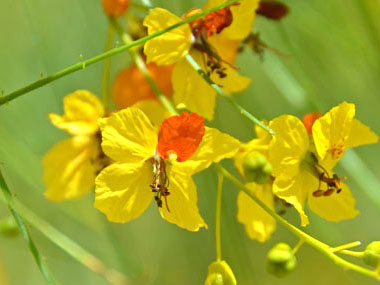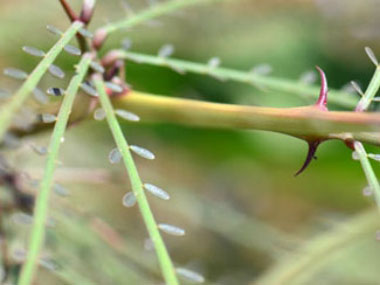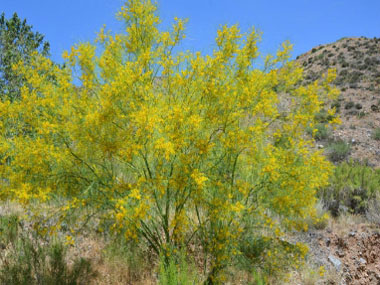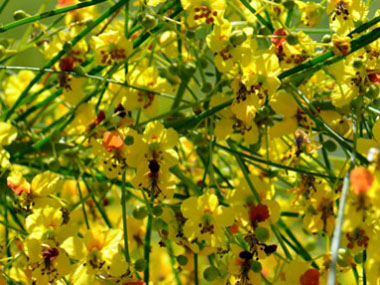





To support our efforts please browse our store (books with medicinal info, etc.).
Jerusalem Thorn is a native tree that grows in the southern U.S. It in the Fabaceae (or Leguminosae) family. This tree is also commonly referred to as retama, and lesser known names include Horse Bean, Mexican Palo Verde, Guacaporo, Bagote, Huacapori, Junco Marino, Cacaporo, Guacóporo, Huacóporo, Espinillo, and Mezquite Verde. In addition to growing in the southern U.S., Jerusalem thorn is also reported to be native to northern Mexico, the Galapagos Islands and in some South American countries. It has naturalised in eastern Africa, tropical and southern Africa, Pakistan, Oceania, and Central America.
Trunk/Bark
When young, its bark is relatively smooth, green, and indicative of many desert plants, it has many thorns. As it ages the trunk remains green and the bark can become somewhat scaly. This tree can have a single or multiple trucks. The bark is thin and easily damaged.
Branches/Twigs
Jerusalem thorn branches are bright green or yellow-green, smooth bark (hairless), and it has photosynthesizing bark. Its needle-sharp spines are turned up slightly. Branches often droop or have a zigzag appearance. Younger stems have a pair of sharp spines (3-20 mm long) below each leaf (stipular spines) and these remain on older stems after the leaves have been shed.
Height
5 to 6 metres (15 to 20'). Some trees can be almost as wide as they are tall.
Leaves/Needles
Leaves grow alternately along the stems, are pinnately compound, and leaflets grow in 1 to 3 pairs. Leaf shape is elliptical.
Flowers
Yellow flowers measure about 2 cm (1/2”) wide, have five petals, one of which has red spots (becoming entirely red with age). Flowers have 10 stamens. It flowers in May; with minor flowering throughout the year.
Fruit
The fruit is a brown, many-seeded legume up to 10cm (4”) long. They are thick and somewhat leather-like.
Habitat
This tree tends to prefer areas that are moist and poorly drained. It is mostly found growing near creeks, rivers and man-made water points (bores and dams) in semi-arid regions (especially those that have a distinctive wet and dry season). It is also found to grow in grasslands, open woodlands, pastures, waste areas, disturbed sites and roadsides. According to the USDA this tree grows throughout the SW, SE, southern U.S. and in possibly in Hawaii. Jerusalem Thorn can grow at elevations up to 900 metres (3,000'). It has a salt tolerance so it can grow along coastal areas.
Edible Parts
The young seed pods and mature seeds (generally the flatter the better) are edible when cooked. According to Mark Vorderbruggen of Foraging Texas, young seed pods can be cooked like green beans. Hard, mature beans can be ground into flour or cooked liked domestic dried beans.
Other Name
Retama.
Recipes
A special thank you to Eugene Sturla of Southwest Desert Flora. His generosity of providing all images of this tree made this page possible.
Winter Survival Food Handbook

PDF Plant Magazines
Types of Wild Food
Geographic Zones Seasons
Disclaimer
EdibleWildFood.com is informational in nature. While we strive to be 100% accurate, it is solely up to the reader to ensure proper plant identification. Some wild plants are poisonous or can have serious adverse health effects.
We are not health professionals, medical doctors, nor are we nutritionists. It is up to the reader to verify nutritional information and health benefits with qualified professionals for all edible plants listed in this web site. Please click here for more information.
Why Edible Wild Food?
- Food costs are rising
- Free, wild food is readily abundant
- Wild food adds nutrition to your diet
- Wild food can help treat various medical conditions





